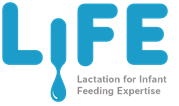Method for quantification of glycerophospholipids and sphingomyelin in human milk and infant formula
Quantification of glycerophospholipids and sphingomyelin in human milk and infant formula by high performance liquid chromatography coupled with mass spectrometer detector
Tavazzi I, Fontannaz P, Lee LY, Giuffrida F
Lipids provide 50% of the calories in human milk and are present in the form of fat globules, which are made of triacylglycerols surrounded by a membrane composed of phospholipids, cholesterol, enzymes, proteins, glycosphingolipids and glycoproteins. Phospholipids and sphingomyelin are difficult to analyze quantitatively in breast milk due to their low amounts and their chemical properties (they contain both: a water-soluble and a water-insoluble group). Previous methods described in the literature were either only adequate for qualitative and semi-quantitative purposes or were costly and required highly trained operators, thus not suitable for analyzing a large set of samples. This works describes a method validation to quantify the most abundant phospholipid classes in human milk using high performance liquid chromatography coupled with mass spectrometer detector (HPLC-MS/MS). The method was used successfully also to analyze infant formula demonstrating feasibility for application to other matrixes.
J Chromatogr B Analyt Technol Biomed Life Sci. 2018;1072:235-243. doi: 10.1016/j.jchromb.2017.10.067.